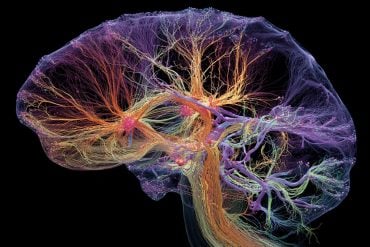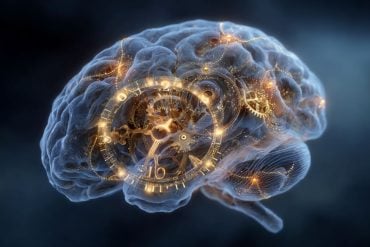Summary: Researchers have developed an AI system that predicts chemical compounds capable of targeting two proteins simultaneously, potentially creating more effective medications. By training the AI with a chemical language model, it was able to generate novel molecular structures with dual-target activity, an essential feature for treating complex diseases like cancer.
The AI produced compounds that might not be immediately considered by chemists, offering new opportunities for drug design. This approach could help identify innovative treatment options with fewer side effects.
Key Facts:
- AI predicts chemical compounds that target two proteins simultaneously.
- Dual-target drugs are valuable for treating complex diseases like cancer.
- The AI suggests novel chemical structures that inspire new drug design approaches.
Source: University of Bonn
Researchers from the University of Bonn have trained an AI process to predict potential active ingredients with special properties. Therefore, they derived a chemical language model – a kind of ChatGPT for molecules.
Following a training phase, the AI was able to exactly reproduce the chemical structures of compounds with known dual-target activity that may be particularly effective medications.

The study has now been published in Cell Reports Physical Science.
Anyone who wants to delight their granny with a poem on her 90th birthday doesn’t need to be a poet nowadays: A short prompt in ChatGPT is all it takes, and within a few seconds the AI spits out a long list of words that rhyme with the birthday girl’s name. It can even produce a sonnet to go with it if you like.
Researchers at the University of Bonn have implemented a similar model in their study – known as a chemical language model. This does not, however, produce rhymes. Instead, the AI displays the structural formulas of chemical compounds that may have a particularly desirable property: They are able to bind to two different target proteins. In the organism, this means, for example, they can inhibit two enzymes at once.
Wanted: Active ingredients with a double effect
“In pharmaceutical research, these types of active compounds are highly desirable due to their polypharmacology,” explains Prof. Dr. Jürgen Bajorath.
The computational chemistry expert heads the AI in Life Sciences area at the Lamarr Institute for Machine Learning and Artificial Intelligence and the Life Science Informatics program at b-it (Bonn-Aachen International Center for Information Technology) at Uni Bonn.
“Because compounds with desirable multi-target activity influence several intracellular processes and signaling pathways at the same time, they are often particularly effective – such as in the fight against cancer.”
In principle, this effect can also be achieved by co-administration of different drugs. However, there is a risk of unwanted drug-drug interactions and different compounds are also often broken down at different rates in the body, making it difficult to administer them together.
Finding a molecule that specifically influences the effect of a single target protein is no easy task. Designing compounds that have a predefined double effect is even more complicated. Chemical language models may help here in the future.
ChatGPT is trained with billions of pages of written text and learns to formulate sentences itself. Chemical language models work in a similar way, but only have comparably very small amounts of data available for learning.
However, in principle, they are also fed with texts, such as what are known as SMILES strings, which show organic molecules and their structure as a sequence of letters and symbols.
“We have now trained our chemical language model with pairs of strings,” says Sanjana Srinivasan from Bajorath’s research group.
“One of the strings described a molecule that we know only acts against one target protein. The other represented a compound that, in addition to this protein, also influences a second target protein.”
AI learns chemical connections
The model was fed with more than 70,000 of these pairs. This allowed it to acquire an implicit knowledge of how the normal active compounds differed from those with the double effect.
“When we then fed it with a compound against a target protein, it suggested molecules on this basis that would act not only against this protein but also against another,” explains Bajorath.
The training compounds with the double effect often target proteins that are similar and thus perform a similar function in the body.
In pharmaceutical research, however, people are also looking for active ingredients that influence completely different classes of enzymes or receptors. To prepare the AI for this task, fine-tuning took place after the general learning phase.
The researchers used several dozen special training pairs to teach the algorithm which different classes of proteins the suggested compounds should target. This is a bit like instructing ChatGPT not to create a sonnet this time, but instead a limerick.
After the fine-tuning, the model actually spat out molecules that have already been shown to act against the desired combinations of target proteins.
“This shows that the process works,” says Bajorath.
In his opinion, however, the strength of the approach is not that new compounds exceeding the effect of available pharmaceuticals can immediately be found.
“It is more interesting, from my point of view, that the AI often suggests chemical structures that most chemists would not even think of right away,” he explains.
“To a certain extent, it triggers ‘out of the box’ ideas and comes up with original solutions that can lead to new design hypotheses and approaches.”
Participating institutions and funding:
The study was conducted at the University of Bonn at the Lamarr Institute and b-it.
About this AI and pharmacology research news
Author: Katrin Piecha
Source: University of Bonn
Contact: Katrin Piecha – University of Bonn
Image: The image is credited to Neuroscience News
Original Research: Open access.
“Generation of Dual-Target Compounds Using a Transformer Chemical Language Model” by Jürgen Bajorath et al. Cell Reports Physical Science
Abstract
Generation of Dual-Target Compounds Using a Transformer Chemical Language Model
Compounds with defined multi-target activity are candidates for the treatment of multi-factorial diseases. Such compounds are mostly discovered experimentally. Designing compounds with the desired activity against two targets is typically attempted by pharmacophore fusion.
In addition, machine learning models can be derived for multi-target prediction of compounds or computational target profiling.
Here, we introduce transformer-based chemical language model variants for the generative design of dual-target compounds.
Alternative models were pre-trained by learning mappings of single- to dual-target compounds of increasing similarity. Different models were optimized for generating compounds with activity against pairs of functionally unrelated targets using a new cross-fine-tuning approach.
Control models confirmed that pre-trained and fine-tuned models learned the chemical space of dual-target compounds. The final models were found to exactly reproduce known dual-target compounds excluded from model derivation.
In addition, many structural analogs of such compounds were generated, further supporting the validity of the methodology.






